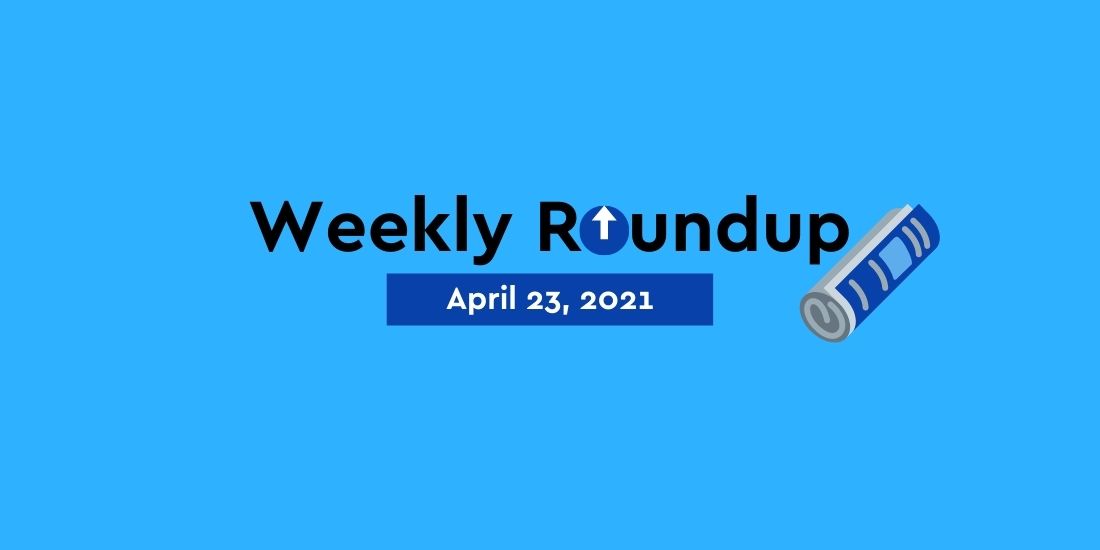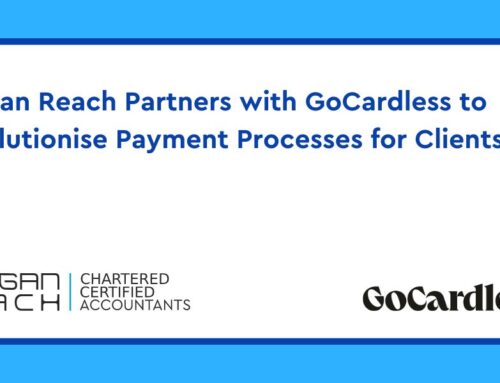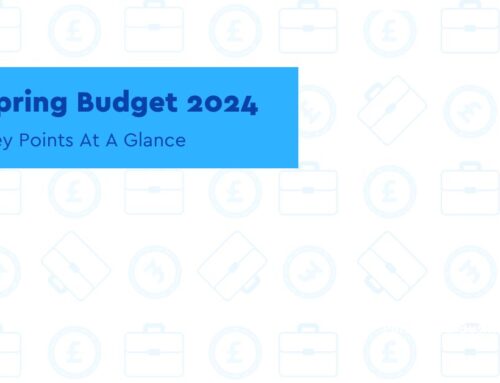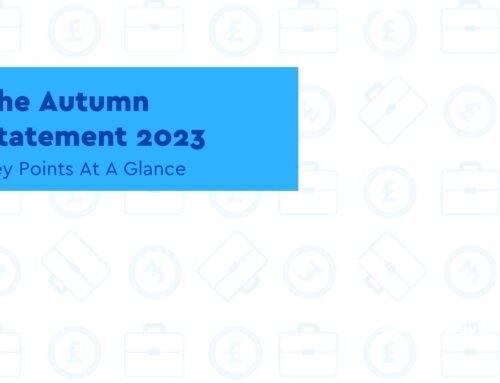Bounce Back Loan repayments – How Pay As You Grow can provide flexibility

April 20, 2021
Key Points
- Under the Bounce Back Loan Scheme, no repayments or interest are due from the borrower during the first 12 months of the loan term
- Lenders will start to communicate PAYG options to Bounce Back Loan Scheme borrowers three months before repayments commence
- Options include requesting an extension of their loan term to 10 years from six years, at the same fixed interest rate of 2.5%
The UK Government announced Pay As You Grow (PAYG) options for Bounce Back Loan borrowers in September last year, giving the borrower flexibility and more time to pay back their Bounce Back Loan should they need it.
Under the Bounce Back Loan Scheme, no repayments or interest are due from the borrower during the first 12 months of the loan term.
Repayments are due to start from May 2021 for firms who took out loans straight away, but they will now be able to apply for interest-only payments or payment holidays for up to 6 months.
Lenders will start to communicate PAYG options to Bounce Back Loan Scheme borrowers three months before repayments commence.
Lenders will inform their customers about PAYG directly, so borrowers should wait until they are contacted by their lender before enquiring about the scheme. Lenders will advise customers about how their payment profiles may change according to their choices under the scheme.
PAYG will provide options, including:
- Requesting an extension of their loan term to 10 years from 6 years, at the same fixed interest rate of 2.5% per annum.
- Reducing their monthly repayments for six months by paying interest only. This option is available up to three times during the term of their Bounce Back Loan
- Taking a repayment holiday for up to six months. This option is available once during the term of their Bounce Back Loan
Borrowers can use these options individually or in combination with each other.
Borrowers should be aware that they will pay more interest overall if they use one or more of these options, and that the length of the loan will increase in line with any repayment holidays taken.
For more information on PAYG and the BBLS, visit the British Business Bank.
Coronavirus Job Retention Scheme – guidance from May

April 20, 2021
Key Points
- For periods from May 1, 2021 onwards, you will be able to claim for newly eligible employees who could not claim from November 1, 2020 but were employed by you and on your PAYE payroll on March 2, 2021
- You and your employees do not need to have benefitted from the scheme before to make a claim, as long as you meet the eligibility criteria
- As previously you have the choice to calculate the CJRS grant across more than one pay period within a calendar month, or you can continue to claim for each pay period
In March, the Chancellor confirmed in the Spring Budget that the Coronavirus Job Retention Scheme (CJRS) will now run until September 30, 2021. Following the Budget announcements, there are changes to employee eligibility and employer contributions which take effect from May 2021 and July 2021 respectively.
For periods from May 1, 2021 onwards, you will be able to claim for newly eligible employees who could not claim from November 1, 2020 but were employed by you and on your PAYE payroll on March 2, 2021. This means you must have made a PAYE Real Time Information (RTI) submission to HMRC between March 20, 2020 and March 2, 2021, notifying HMRC of earnings for that employee.
You and your employees do not need to have benefitted from the scheme before to make a claim, as long as you meet the eligibility criteria.
From July 1, 2021 the scheme will taper off, with employers making a 10% contribution to salary in July and 20% in August and September. The employee though must still receive the full 80% of their normal salary.
Calculate how much you can claim
As previously, you have the choice to calculate the CJRS grant across more than one pay period within a calendar month, or you can continue to claim for each pay period.
- If you’re claiming for a full month you should use the £2,500 monthly wage cap
- If you’re claiming for any full weeks within a claim, ie 1, 2 or 4 week pay frequencies, then you should use the £576.92 weekly wage cap
- For any other pay frequency, or a claim length that isn’t exact weeks, use the maximum day rates multiplied by the number of calendar days in the pay periods of:
- £83.34 for April, June and September
- £80.65 for May, July and August
An employee is eligible from May 1, 2021 if they were reported by March 2, 2021 even if their first pay period was after that date.
Making your claim
To make your claim you’ll need to give information about your business and employees, including:
- Employer PAYE scheme reference number
- Number of employees being furloughed
- National Insurance number for each employee
- Start and end date of the claim
- Corporation Tax unique taxpayer reference, Self Assessment unique taxpayer reference (find your UTR if you don’t know it), or company registration number. If you don’t have any of these, you can enter your Employer Name instead
You should include all of the employees you want to furlough for that claim period. You won’t be able to make another claim for the same period and claim periods cannot overlap.
Deadlines for claims
Claim periods have monthly deadlines. They must be submitted within 14 calendar days of the month they relate to, unless this falls on a weekend and then it is the next working day.
You can claim before, during or after you process your payroll as long as your claim is submitted by the deadline.
Self-employed given personal claim date for fourth SEISS grant

April 19, 2021
Key Points
- HMRC said they were contacting all new claimants via email, post or within an individual’s online tax account
- All claims must be submitted prior to June 1, 2021
- If you claim, you must also keep appropriate records as evidence of the impact on your business
HMRC has started informing eligible self-employed individuals of their personal claim dates for the upcoming fourth Self Employment Income Support Scheme (SEISS) grant.
HMRC have advised that they were contacting all new claimants via email, post or within an individual’s online tax account. Claimants will then be able to check the date they can apply for the funding. This date will differ from person to person. All claims must be submitted prior to June 1, 2021.
To apply, you’ll need to reasonably believe there is a significant reduction in your trading profits due to coronavirus between February 2021 and April 2021, and that you intend to continue to trade. You need to also take into account previous grants received when looking at your trading profits.
Claiming online is the quickest and easiest way to get your grant if you are eligible. Search for ‘Self-Employment Income Support Scheme’ on GOV.UK.
If you claim, you must keep appropriate records as evidence of the impact on your business.
Claimants for the fourth SEISS grant must also have sufficient evidence and documentation that their business has suffered from diminished income and demand at the time of their claim.
For the fourth SEISS grant, claims can only be submitted by the individual and not by a tax agent or accountant on your behalf.
Once again, the fourth SEISS grant will be capped at £7,500 and set at 80% of average trading profits across three months. To qualify for the grant, self-employed trading profits must be no more than £50,000, and at least equal to or more than non-trading income.
How to make a claim for the fourth SEISS grant
Any self-employed claimant will need the following:
- National Insurance number
- Self Assessment Unique Taxpayer Reference (UTR)
- Government Gateway user ID and password
- UK bank account – including sort code, account number and address linked to the account
When should you receive the fourth SEISS grant?
Providing your claim is successful, the funds should be paid into your nominated bank account in no more than six working days.
For full details of eligibility criteria, and how the grant is calculated, please visit GOV.UK and search ‘Self-Employment Income Support Scheme’ or SEISS.
Who is ineligible for the fourth SEISS grant?
If a self-employed individual failed to file their self-assessment tax return for the 2019/20 tax year by 3rd March 2021, then they will be ineligible to claim.
The Chancellor confirmed during his Budget that there will also be a fifth payment, which will open to claims from late July and cover the period from May until July.
Limited window for SMEs to apply for Brexit support grant

April 19, 2021
Key Points
- Businesses qualifying for a grant under the Brexit Support Fund only have until June 30, 2021
- You will be eligible if your business has up to 500 employees and no more than £100 million annual turnover.
- You can use the grant for specific import and export related aspects including VAT, excise and rules of origin
Small businesses that only trade with the EU can now apply for a grant through the SME Brexit Support Fund for help with importing and exporting.
The Fund provides grants of up to £2,000 to small and medium-sized enterprises for training or professional advice to help meet their customs, excise, import/export VAT or safety and security declaration requirements.
Recet HMRC guidance confirmed that applications can now be made online and that the closing date is June 30, so any eligible businesses should claim as soon as possible. It also states that the fund may close for applications earlier if all funds are allocated.
Applications can be made for a training grant, a professional advice grant, or both, but the total amount of funding requested cannot exceed £2,000.
A new timetable for introducing import border control processes was recently put in place, enabling UK businesses to focus on recovery. Full import border control processes will now be introduced on January 1, 2022, six months later than originally planned.
What can I use the SME Brexit Support Fund for?
Recipients can use the grant for training on:
- How to complete customs declarations
- How to manage customs processes and use customs software
- Specific import and export-related aspects including excise, VAT and rules of origin
Who will be able to apply
Your business must:
- Be established in the UK
- Have been established in the UK for at least 12 months before submitting the application, or currently hold Authorised Economic Operator status
- Not have previously failed to meet its tax or customs obligations
- Have no more than 500 employees
- Have no more than £100 million turnover
- Only import or export goods between Great Britain and the EU, or move goods between Great Britain and Northern Ireland, if you already import or export goods from or to a non-EU country you are not eligible for his grant
In addition, your business must also either:
- Complete (or intend to complete) import or export declarations internally for own goods
- Use someone else to complete import or export declarations but needs additional capability internally to effectively import or export (such as advice or rules of origin or advice on managing supply chain)
VAT penalty rates and new mortgage scheme

Penalty rates for deferred VAT scheme set at 5%
HMRC has confirmed that VAT registered businesses will be liable for a 5% penalty or interest if they do not pay in full or make an arrangement to pay deferred VAT by June 30, 2021. Businesses that deferred VAT payments due between March and June 2020 can either pay the deferred VAT in full now or join the new VAT deferral payment scheme. The online VAT deferral notification service opened on February 23, 2021 and is available until June 21, 2021.
New 95% mortgage scheme launches
A new government-backed mortgage scheme to help people with 5% deposits get on to the housing ladder is available. The scheme will help first time buyers or current homeowners secure a mortgage with just a 5% deposit to buy a house of up to £600,000. The government will offer lenders the guarantee they need to provide mortgages that cover the other 95%, subject to the usual affordability checks.
Check out the updated guide on calculating the minimum wage
An updated version of the calculating the minimum wage guide for employers is now live.
The guide is easier to navigate and includes information on the types of workers who are eligible, payments and deductions, salaried hours work and unpaid work.
We’ve also added example calculations for common errors that employers sometimes make, and you’ll find links to the new rates.
You can also use the new employer’s checklist at the end of the guide, a helpful tool to check for the common National Minimum Wage risks.
A new one-off £500 payment to support working households receiving tax credits
Do any of your employees receive Tax Credits? They may be eligible for a one-off payment of £500 to support their household through the Covid-19 pandemic.
The new one-off payment is being introduced to provide extra support for working households as the temporary increase in Working Tax Credit of £1045 a year, introduced at the start of the pandemic, ended as planned on April 5, 2021.
Telling your employees about this payment will help protect them from scams and prepare them for changes to their regular Tax Credits payments.
HMRC will automatically make the payment by April 23, 2021. We will contact claimants by text message or letter to confirm they will receive the payment. Your employees do not need to contact us or to apply for this payment.
Your employees may be eligible if, on March 2, 2021, they were getting either:
- Working Tax Credit
- Child Tax Credit and where eligible for Working Tax Credit but their income was too high to get Working Tax Credit payments
The one-off payment will not affect any other benefits, such as Housing Benefit or Universal Credit, that your employees may receive.
Your employees do not need to pay Income Tax or National Insurance on the amount of this one-off payment or declare it as income for Self Assessment tax returns, if they complete one.
Get in touch
If you are self-employed or run a business and need assistance and advice on how the recent announcements could make a difference to you or your business, feel free to get in touch with the experts at Morgan Reach. Our business growth experts at Morgan Reach will guide you through what support is available for you or your business as well as the latest news that may affect you







